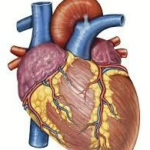Top 5 Traits of Sagittarius: Unraveling the Mysteries of This Dynamic Sign
Sagittarius, the ninth sign of the zodiac, is known for its fiery energy, adventurous spirit, and philosophical nature. Governed by Jupiter, the planet of expansion and abundance, Sagittarians are often seen as dynamic individuals who thrive on exploration and discovery. Often characterized by their optimism and enthusiasm, those born under this sign are complex and multifaceted, possessing a unique combination of traits that set them apart from others. In this article, we will delve into the top five traits that define a Sagittarius and explore how these characteristics shape their lives and relationships.
1. Adventurous Spirit
One of the most defining traits of a Sagittarius is their insatiable thirst for adventure. Sagittarians are natural explorers, often seeking out new experiences, cultures, and philosophies. This adventurous spirit doesn’t just manifest in physical travel; it also encompasses intellectual exploration. Sagittarians are drawn to learning and expanding their horizons, often finding themselves in pursuit of knowledge or spiritual growth.
The Love for Travel
Travel is synonymous with the Sagittarius personality. Many Sagittarians find themselves restless if they are not able to explore the world around them. They are typically the first to suggest a road trip or a spontaneous getaway. Their enthusiasm for different places, people, and experiences drives them to immerse themselves in new environments, making friends easily along the way.
Embracing Change
Sagittarians often thrive in dynamic settings where change is constant. Unlike those who fear change, Sagittarians embrace it, seeing it as an opportunity to grow and learn. This adaptability allows them to navigate their journeys with confidence, making them resilient even in the face of challenges.
A Natural Leader in Adventure
When a Sagittarius is leading an adventure, they often inspire those around them to step out of their comfort zones. Their infectious enthusiasm encourages friends and family to join in on the adventures, making every experience memorable. Sagittarians are fearless voyagers who not only seek to satisfy their curiosity but also to inspire others to pursue their dreams.
2. Optimistic Outlook
Another prominent trait of Sagittarius is their natural optimism. Sagittarians have a tendency to see the glass as half-full, even in challenging situations. This hopeful disposition not only helps them navigate life’s ups and downs but also positively impacts those around them.
Resilience Through Positivity
Sagittarians possess a remarkable ability to bounce back from setbacks. When faced with adversity, their optimism becomes a powerful tool, allowing them to find silver linings and lessons learned from difficult experiences. This resilience often draws others to them, as they inspire those in their circles to adopt a more positive mindset.
Impacting Relationships
In relationships, Sagittarians’ optimism can be a double-edged sword. On one hand, it makes them incredible partners and friends, as they bring a sense of joy and enthusiasm to the dynamic. On the other hand, their unwavering optimism can sometimes lead them to overlook challenges or issues that need addressing. Listening and validating others’ feelings can help them find a balance between optimism and realism in relationships.
Spreading Joy
Sagittarians often have a knack for bringing people together and celebrating life’s simple pleasures. Their contagious laughter and zest for life can lift the spirits of everyone around them, making them social magnets. Their ability to create a sense of camaraderie often leads to lasting friendships and meaningful connections.
3. Intellectual Curiosity
Sagittarians are known for their love of learning. They possess a natural curiosity that drives them to question, explore, and discover. This intellectual curiosity is one of the most admirable traits of a Sagittarius, as it encourages personal growth and self-improvement.
Lifelong Learners
For Sagittarians, education doesn’t stop at school; it is a lifelong pursuit. They are often drawn to philosophical topics, exploring concepts that expand their understanding of the world. Whether it’s reading books on a wide range of subjects, attending lectures, or engaging in thought-provoking conversations, they thrive on gaining new insights.
Open-Mindedness
Sagittarians approach life with an open mind, ready to consider new ideas and perspectives. This receptiveness allows them to connect with people from various backgrounds and cultures. Their ability to change their views based on new information is a testament to their intellectual integrity.
Encouraging Others to Explore
Sagittarians also inspire others to explore their intellectual curiosities. Friends and family often look to them for motivation, as their passionate discussions ignite a desire to learn in those around them. This trait makes them not only great conversationalists but also effective educators.
4. Honest and Direct Communication
Sagittarians are known for their straightforward approach to communication. They value honesty and transparency, often speaking their minds without filtering their thoughts. While this trait can lead to vibrant and open conversations, it can also cause friction.
Bluntness
While Sagittarians appreciate frankness, their directness can sometimes come off as a lack of tact. They do not shy away from expressing their opinions, and this boldness can lead to misunderstandings. Sagittarians often need to remember the importance of diplomacy in their interactions, especially when dealing with sensitive topics.
Value in Authenticity
This honesty is rooted in a desire for authenticity. Sagittarians seek genuine connections and are drawn to people who are equally sincere. They often have little patience for superficiality or dishonesty, preferring instead to engage in conversations that lead to deeper understanding.
Building Trust
Sagittarians’ honesty helps build trust in their relationships. People often feel comfortable confiding in a Sagittarius, knowing that they will receive honest feedback. This trait can create a strong bond, as trust and honesty lay the foundation for meaningful connections.
5. Independent Nature
Independence is a hallmark of the Sagittarius personality. Those born under this sign value their freedom and often resist being tied down by obligations or commitments. This trait is deeply ingrained in their character and influences how they navigate life.
Thriving on Freedom
Sagittarians require space to explore and express themselves. They often prefer experiences that allow for flexibility and spontaneity. This need for freedom can sometimes present challenges in relationships, as they may struggle with commitments or feel restricted by conventional expectations.
Self-Reliance
Sagittarians often pride themselves on their self-reliance. They enjoy carving their own path and are less likely to depend on others for validation or support. This independence fosters a strong sense of identity and self-confidence, empowering them to face life’s challenges head-on.
Finding Balance
While their independence is admirable, learning to embrace interdependence is essential for Sagittarians. Building relationships often requires compromise and understanding. Balancing their need for freedom with the need for connection can lead to more fulfilling relationships.
Conclusion
Sagittarius is a dynamic sign characterized by its adventurous spirit, optimism, intellectual curiosity, honest communication, and independence. Those born under this sign are not only captivating individuals but also inspire others through their zest for life and unwavering pursuit of knowledge. While they possess remarkable traits that make them unique, they also face challenges that require self-awareness and growth.
Understanding the complexities of Sagittarius can deepen our appreciation for their vibrant personalities and the enriching connections they provide. Whether you are a Sagittarius yourself or have a close friend or partner under this sign, recognizing these top five traits can enhance your relationships and foster meaningful exchanges.
As we journey through the astrological landscape, let us cherish the contributions of Sagittarians, celebrating their ability to inspire adventure, positivity, and authenticity in a world that often seeks to confine creativity and exploration. Embrace the Sagittarius spirit, and let it guide you towards new horizons and endless possibilities.


























Add Comment